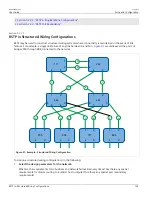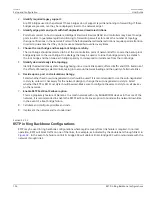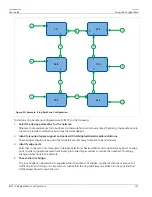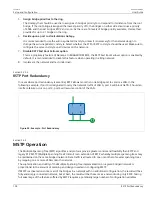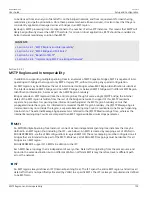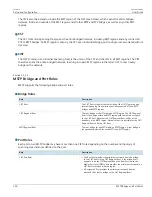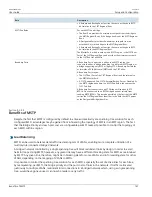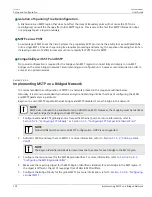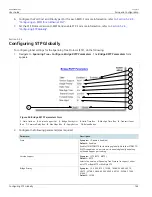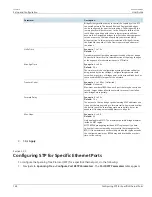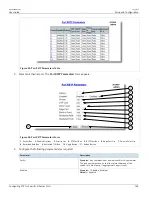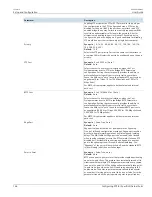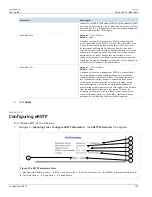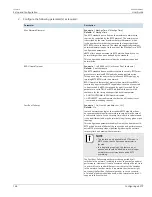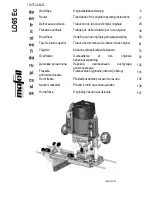
RUGGEDCOM ROS
User Guide
Chapter 5
Setup and Configuration
Bridge Diameter
153
To remedy this problem in future applications, the IEEE 802.1w specification limits port costs to values of 1 to
20000000, and a link speed up to 10 Tb per second can be represented with a value of 2.
RUGGEDCOM bridges support interoperability with legacy STP bridges by selecting the style to use. In practice,
it makes no difference which style is used as long as it is applied consistently across the network, or if costs are
manually assigned.
Section 5.2.1.5
Bridge Diameter
The bridge diameter is the maximum number of bridges between any two possible points of attachment of end
stations to the network.
The bridge diameter reflects the realization that topology information requires time to propagate hop by hop
through a network. If configuration messages take too long to propagate end to end through the network, the
result will be an unstable network.
There is a relationship between the bridge diameter and the maximum age parameter. To achieve extended ring
sizes, Siemens eRSTP™ uses an age increment of ¼ of a second. The value of the maximum bridge diameter is thus
four times the configured maximum age parameter.
NOTE
The RSTP algorithm is as follows:
• STP configuration messages contain
age
information.
• Messages transmitted by the root bridge have an age of 0. As each subsequent designated bridge
transmits the configuration message it must increase the age by at least 1 second.
• When the age exceeds the value of the maximum age parameter the next bridge to receive the
message immediately discards it.
IMPORTANT!
Raise the value of the maximum age parameter if implementing very large bridged networks or rings.
Section 5.2.1.6
eRSTP
Siemens's enhanced Rapid Spanning Tree Protocol (eRSTP) improves the performance of RSTP in two ways:
• Improves the fault recovery time performance (< 5 ms per hop)
• Improves performance for large ring network topologies (up to 80 switches)
eRSTP is also compatible with standard RSTP for interoperability with commercial switches.
For example, in a network comprised of 15 RUGGEDCOM hardened Ethernet switches in a ring topology, the
expected fault recovery time would be less than 75 ms (i.e. 5 ms x 15). However, with eRSTP, the worst case fault
recovery time is less than 26 ms.

















